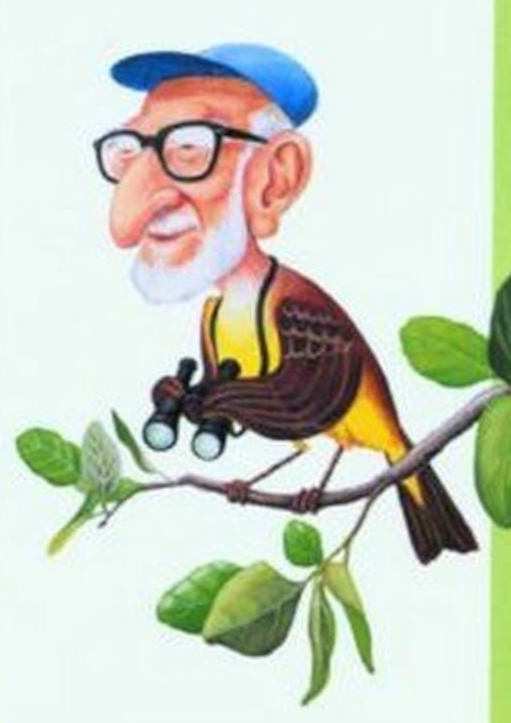Salim Ali, the celebrated Indian ornithologist known as the “Birdman of India,” began his remarkable journey in Hyderabad State, where his fascination with birds took root. His work revolutionized Indian ornithology, leading to significant bird conservation efforts and inspiring generations to protect India’s avian diversity.
On his 128th birth anniversary, Dr. Ali’s legacy resonates deeply, inspiring conservation efforts across India… The Hyderabad Deccan survey is a timeless testament to his passion, a pioneering achievement that resonates as a call to safeguard our heritage for future generations.
Known as the “Birdman of India,” Dr. Salim Ali revolutionized the way Indians engaged with their natural surroundings, turning birdwatching from an obscure pursuit into a popular pastime. His landmark work, The Book of Indian Birds (1941), brought ornithology to the masses, blending scientific rigor with a passion for sharing the wonders of avian life.
Born on November 12, 1896, in Bombay, Ali’s fascination with birds took root when, as a boy, he encountered a curious sparrow (the Yellow Throated Sparrow) , a moment that would shape his future in ornithology. Another sparrow-like bird that brought him worldwide laurels was the discovery of the breeding habits of the Baya-Weaver bird. Today, on his 128th birth anniversary, Dr. Ali’s legacy resonates deeply, inspiring conservation efforts across India and sparking a national appreciation for bird life that is celebrated annually on his birthday.
In the annals of ornithology, few names echo as profoundly as Dr. Salim Ali’s, a man whose life journey redefined the study of birds in India and earned him global fame. His first major bird survey, conducted in 1931, nearly 100 years ago, in the princely state of Hyderabad Deccan, was more than a scientific expedition; it was a pioneering journey through treacherous landscapes, igniting a new era for field ornithology in India.
Commissioned by the Nizam of Hyderabad, Ali’s mission was clear yet daunting: organize the bird species across a sprawling, diverse terrain. In doing so, Ali braved an untamed wilderness, where survival required both intellect and unrelenting grit, proving that even the frailest of figures could command the harshest of landscapes. Afterall it was his brainchild and it needed to be nurtured with all his instincts and intellect.
Thrilling journey
Being the first field survey of its kind, there was a need for extreme demand of extraordinary endurance. With tireless energy and boundless enthusiasm, he led his team through remote, uncharted territories without modern luxuries. There were no motorized vehicles to ease their journey, no GPS to guide them. Ali’s team relied solely on foot, horseback, and bullock carts, traversing hostile landscapes under unforgiving weather conditions. Ali’s passion for birds fuelled him through relentless challenges. Adapting rapidly to each new environment, he took on these hardships with a fierce resolve that has inspired generations of researchers.
Birth of Ornithology
Without the conveniences of modern equipment, Ali improvised with what he had: binoculars, field notebooks, and rudimentary taxidermy tools acquired in Germany. This bare-bones kit became his arsenal as he documented species meticulously. With every entry, he created a tapestry of observations detailing plumage, behaviours, and calls. His methods laid the foundation for a scientific discipline in India that went beyond cataloguing specimens to understanding ecosystems—a principle that would become the bedrock of ecological ornithology.
Ali’s hands-on approach was revolutionary, transforming birdwatching from a passive activity into a dynamic exploration of ecology. He saw birds as part of an intricate natural web, interconnected with their surroundings. Through the Hyderabad Deccan survey, Ali showcased an approach that married scientific rigor with a deep respect for nature. In focusing on live observations rather than simply amassing shot-dead specimens, he led a transformation, presenting birds as sensitive existences with critical ecological roles.
Encounters with avian treasures
The Hyderabad Deccan region revealed to Ali a mosaic of India’s avian diversity, from common birds to exotic, rare species. Among the unforgettable encounters was the magnificent Great Indian Bustard, a bird that would later become symbolic of his conservation efforts. His encounters with the bustard and other unique birds fuelled his advocacy, as he watched with dismay how encroaching human development threatened these habitats.
The Hyderabad Deccan survey solidified Dr. Salim Ali’s status as India’s foremost ornithologist, setting unprecedented standards for field research. His meticulous approach to documentation, data collection, and mapping laid the foundation for future ornithological studies.
As his reputation grew, the success of this survey inspired other princely states to support similar studies across India, opening doors to pioneering surveys in regions like Cochin, Travancore, Mysore, Kashmir, etc. Dr. Ali was also very prolific with his pen and wrote copiously about his surveys and published them as voluminous books.
Dr. Asad Rahmani, an experienced wildlife specialist says “Even 50 years after publication, the Handbook of the Birds of India, by Salim Ali and Dillon Ripley is an irreplaceable masterpiece. Unfortunately, many younger generations of birdwatchers and ornithologist do not consult the Handbook. They do not know what they are missing.”
Ali’s enduring legacy
In the early 1980s when Dr. Ali visited the Nehru Zoological Park in Hyderabad as he was keen to observe the breeding Sarus Cranes duet display, which is rare for any zoo in India. Another aspect that fascinated Dr. Ali was the zoo’s location near Mir Alam Tank, a large lake that attracted hundreds of migratory birds annually. Says B.C.Choudhury, another wildlife veteran who functioned in the zoo during his visit.
Dr. Ali’s surveys were more than an expedition—it was the inception of a movement, a shift toward viewing birds as vital players in ecological balance. His dedication to documenting and preserving India’s avian diversity has left an indelible mark on the country’s environmental consciousness.
He passed away in 1987 but even Today, Dr. Salim Ali’s legacy endures, reminding us of the importance of respecting, understanding, and protecting the natural world. The Hyderabad Deccan survey is a timeless testament to his passion, a pioneering achievement that resonates as a call to safeguard our heritage for future generations. #hydkhabar

